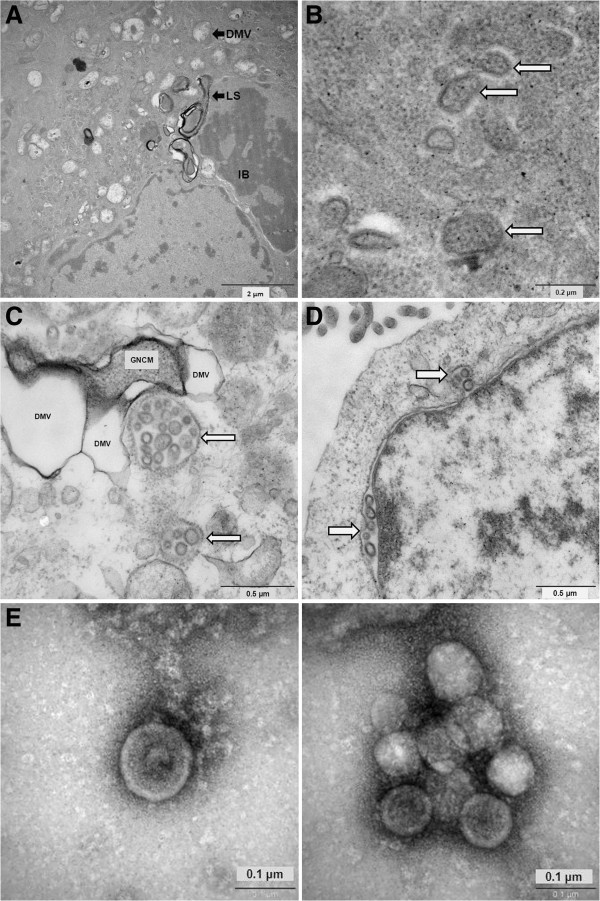Figure 6

Transmission electron micrographs of HCoV-NL63 in LLC-MK2 cells. Scale bars are shown at the bottom right of each figure. [A] Intracellular structures typical of those formed in HCoV-NL63 infected cells: double membrane vacuole (DMV), laminar structure (LS), and inclusion body (IB). Original magnification 10,000x. [B] Granular nucleocapsid material in packets (arrows) typical of those formed by HCoV-NL63 in infected cells. Original magnification 100,000x. [C] Immature HCoV-NL63 particles in rough endoplasmic reticulum (RER) cisternae, with ribosomes in place (large arrows). Electron dense granular nucleocapsid material is visible in some of the virus particles. Double membrane vacuoles (DMV) are evident, adjoining a granular nucleocapsid material in a packet (GNCM), in association with the larger packet of virus particles. Original magnification 50,000x. [D] Immature HCoV-NL63 particles in RER adjacent to the nucleus of an infected cell. Original magnification 40,000x. [E] Free (mature) HCoV-NL63 particles (80 – 100 nm) in spent media. Original magnifications at 200,000x.
